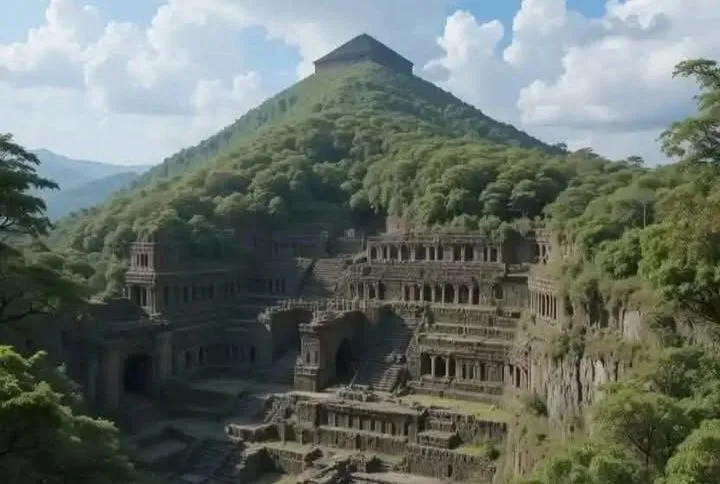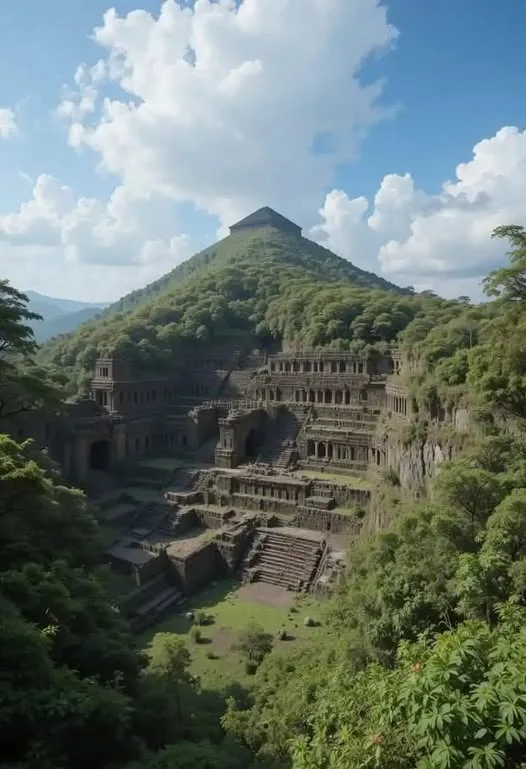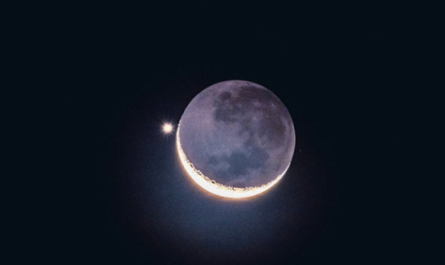The story of Gunung Padang is not just about a buried pyramid; it’s about a fierce debate that is currently shaking the world of archaeology. While the idea of a 28,000-year-old structure in West Java is breathtaking, the evidence and conclusions have become a battleground between traditional archaeology and a new, more speculative line of thought. Let’s delve deeper into this fascinating and contentious topic.

The Discovery that Challenged Everything
The initial research, led by Indonesian geologist Danny Hilman Natawidjaja, used a combination of cutting-edge technology—ground-penetrating radar, seismic tomography, and core drilling—to explore the hill. What they found was a multi-layered structure unlike any natural hill. The data suggested four distinct phases of construction, with the deepest layer potentially dating back to the last Ice Age.

The visible top layer, consisting of columnar basalt stone terraces, is largely accepted to be a megalithic site about 2,000 to 3,000 years old. However, the deeper layers are what sparked the controversy. The team’s radiocarbon dating of soil samples from these layers yielded ages as old as 27,000 years, leading to the stunning conclusion that Gunung Padang is the world’s oldest pyramid, predating Egypt’s Giza pyramids and even Turkey’s Göbekli Tepe by thousands of years.
The Scientific Backlash and the Retraction
This groundbreaking claim, published in a peer-reviewed journal in October 2023, was met with intense skepticism from the mainstream archaeological community. Critics argued that the research was a classic example of “pseudoarchaeology.” Their main points of contention were:
- The Dating of “Dirt”: The radiocarbon dates were taken from soil samples, not from human-made artifacts or features. As critics pointed out, a soil sample from a deep layer could contain old carbon from natural geological processes without any evidence of human activity. The journal that published the paper later retracted it, citing that the radiocarbon dating was applied to samples “that were not associated with any artifacts or features that could be reliably interpreted as anthropogenic or ‘man-made.'”
- Lack of Anthropogenic Evidence: Mainstream archaeologists argue that there is no solid evidence—like tools, bones, or inscriptions—to prove that the deeper layers were actually constructed by humans. Geologists have also noted that the columnar basalt formations could be natural volcanic rock formations, with their seemingly organized appearance being a result of natural processes.
- Challenging the Timeline of Human Civilization: The idea that a pyramid-building civilization existed 27,000 years ago contradicts decades of archaeological evidence, which places the rise of complex societies with monumental architecture much later. The conventional view is that humans were still hunter-gatherers during the last Ice Age, without the technology or societal organization to build such a massive structure.
The Debate Continues
Despite the retraction, the debate over Gunung Padang is far from over. Proponents of the ancient pyramid theory, including figures like journalist Graham Hancock, believe the site is a “smoking gun” for a lost Ice Age civilization—a theory that has found a large audience. The research team behind the discovery has pushed back against the retraction, arguing that it was a form of censorship and that the evidence, which includes geological and geophysical data, still points to a man-made structure.
Currently, new research and excavations are being planned at the site, with a team of Indonesian experts from diverse fields working to settle the debate. The goal is to use advanced equipment to create a complete visualization of the site’s structure and to finally uncover the secrets of the deeper layers.
Whether Gunung Padang is ultimately proven to be the world’s oldest pyramid or a fascinating natural formation, its story has already succeeded in doing one thing: it has forced a new conversation about our ancient past and the possibility that human history is far more complex and surprising than we ever imagined.


